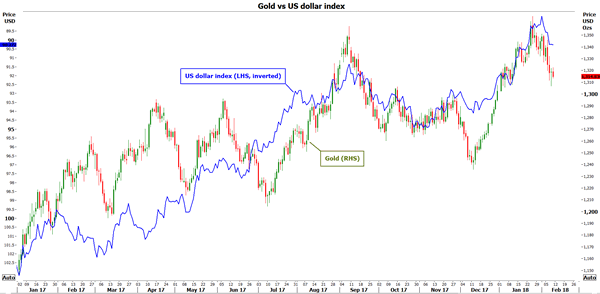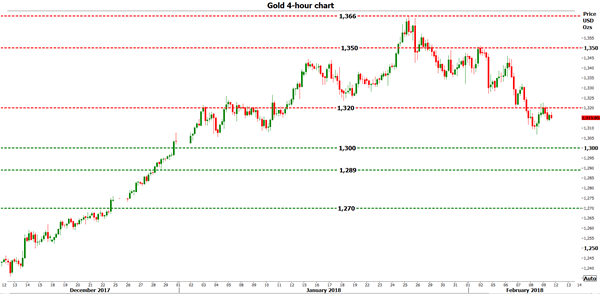The classic narrative that safe havens rally when stocks plunge is on shaky legs right now. While major US equity indices have dropped roughly 10% in a matter of days, gold has actually moved lower over the same period, leaving most investors puzzled. Why has gold’s response been so muted, and what do the cards hold for the precious metal moving forward?
A variety of factors can be blamed for gold’s indifference to the market turbulence. First and foremost is the recovery in the US dollar. Gold is traded in dollars, which implies that when the dollar gains in value, the yellow metal becomes more expensive for investors using other currencies, thereby decreasing its appeal. Moreover, expectations of higher inflation and higher interest rates have probably hurt demand for the precious metal. While gold has traditionally been considered a hedge against inflation, speculation that the Fed will raise interest rates faster as a result of higher inflation is weighing on gold. Since gold pays no interest to hold, it becomes less attractive in an environment of rapidly rising rates.

Another narrative is that investors consider the correction in stock markets as being "healthy". Even though they are piling out of equities, the selloff doesn’t reflect a lack of optimism about the economy’s prospects, but rather the reality of stretched valuations in equities (or in other words, equities being "expensive"). Thus, they have little need to increase their exposure to safe havens like gold, as they may expect the selloff to remain contained in stocks, and perhaps end relatively soon.
Having said all of the above, gold is not necessarily headed lower from current levels. While market participants may largely view this as a "stocks crisis" and have thus not moved into safe havens, that could change very quickly in case the equity turmoil develops into "panic". Moreover, continued market volatility may see the Fed become more conservative about raising rates, for fear of amplifying the selloff further. A more cautious Fed could work against the dollar, and by extent in favor of gold prices.
On another note, concerns regarding the ballooning US budget deficit and long-term debt sustainability have become increasingly more evident recently, as US Treasury yields surged. It thus appears that money is flowing out of both the bond and the equity markets (the two largest markets by far), with investors potentially increasing their cash reserves and waiting for new opportunities. In such an environment, gold and other precious metals could attract some inflows, as an alternative to cash.
In terms of technical levels to watch, the $1300 – $1305 territory will probably serve as the proverbial "line in the sand" regarding further declines or a rebound. Should prices move below the psychological $1300 mark, that would be a negative sign, which could raise the probability for further declines in the metal. On the other hand, a potential rebound from that area would confirm its validity as a support, and may increase the likelihood for a recovery.
Summing up, in the scenario that the equity selloff intensifies, or that the US dollar resumes its downtrend, then gold prices could rebound. A break above $1320 could target the $1350 level as a resistance. A move above that hurdle as well is likely to pave the way for a test of gold’s recent high, at $1366.
Conversely, should the market turbulence subside, or if the greenback continues to recover, gold could break below $1300 and potentially test the $1289 zone. Further downside may see scope for extensions towards the $1270 territory, identified by the lows of mid-November.













